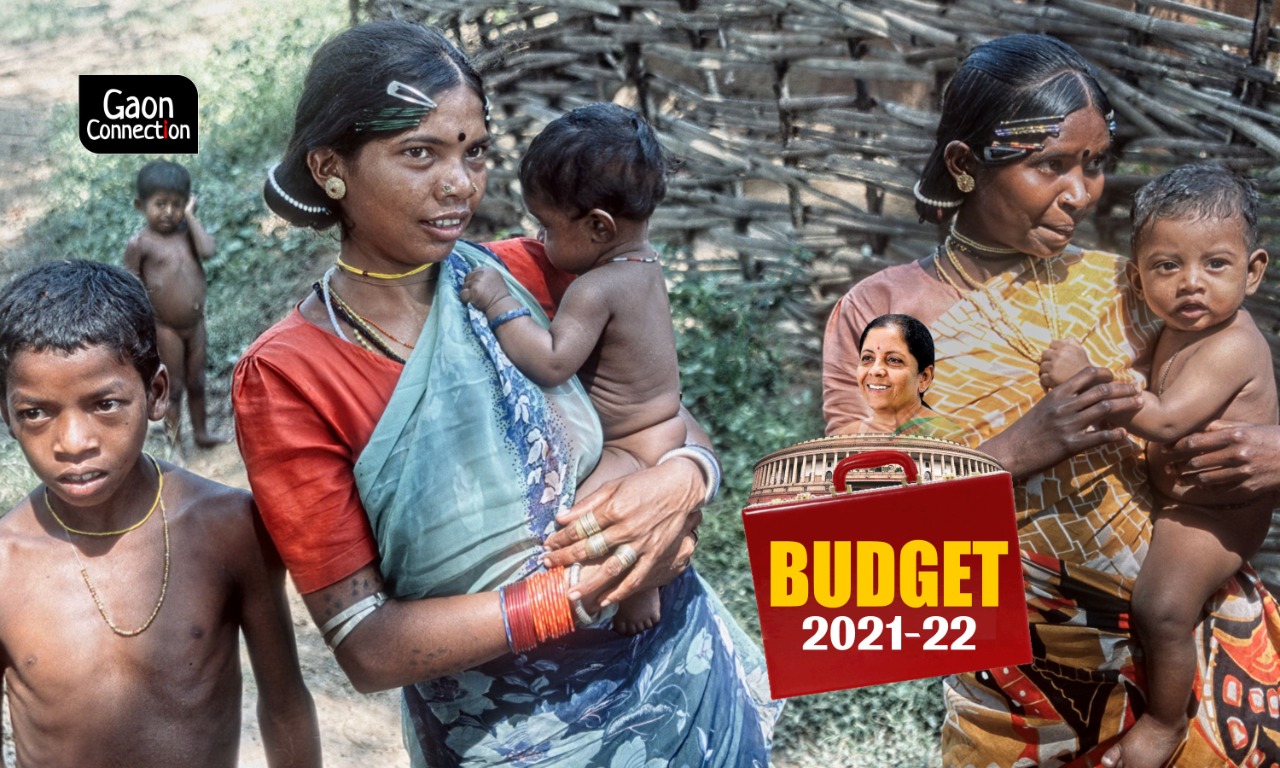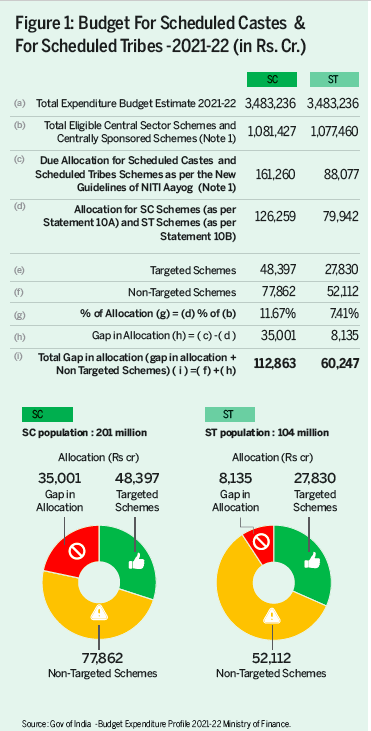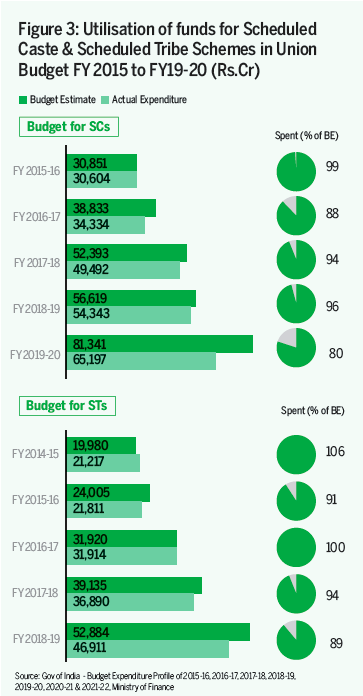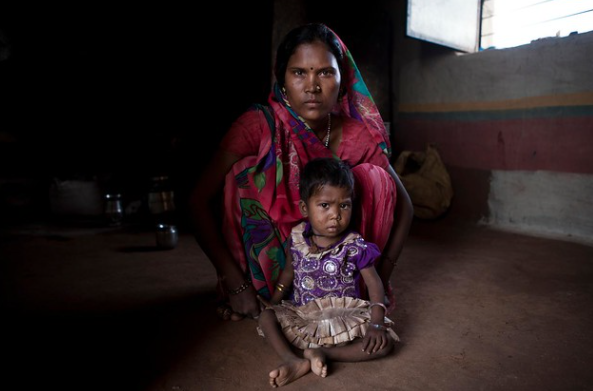Budget 2021: Rs 1,731 billion gap in allocation for Dalits and tribal communities; guidelines not followed: National Campaign on Dalit Human Rights
‘Dalit Adivasi Budget Analysis 2021-22’ by the National Campaign on Dalit Human Rights shows a total gap in allocation of Rs 1,128.63 billion under Schedule Caste budget and Rs 602.47 billion under Schedule Tribe budget. There is an urgent need to allocate and implement the stipulated percentage of funds, it says.


Photo: foto_morgana/flickr
On February 1, presenting the Union Budget 2021-22 in Parliament, finance minister Nirmala Sitharaman said: “The government, led by the Prime Minister, stretched its resources to deliver for most vulnerable sections of our society – the poorest of the poor, the Dalits, Tribals, the elderly, the migrant workers, and our children (sic).”
She also announced the setting up of 750 Eklavya model residential schools in tribal areas. The unit cost of each such school was increased from Rs 200 million to Rs 380 million, and to Rs 480 milion for hilly and difficult areas. This, she said, “would help in creating robust infrastructure facilities for our tribal students”.
Sitharaman announced the revamping of the Post Matric Scholarship Scheme for the welfare of Scheduled Castes (Dalits) and allotted Rs 352.19 billion for six years till 2025-2026, to benefit 40 million students.
However, ‘Dalit Adivasi Budget Analysis 2021-22’, an analysis of Budget 2021 by the National Campaign on Dalit Human Rights, a forum working to eliminate discrimination based on caste, shows that funds allocated towards Dalits and tribal communities, which constitute 25 per cent of the country’s population, is far below the guidelines.
According to the guidelines of NITI Aayog, the allocation of funds to Schedule Castes (SCs) and Schedule Tribes (STs) should be proportionate to their share of the population. However, the allocations in Budget 2021 are far from that.
“There is a total gap in allocation of Rs 1,12,863 crore under SC Budget and Rs 60,247 crore under ST Budget. Out of the total budget allocated for SCs, only Rs 48,397 crore (4.5 per cent) has been allocated towards Targeted schemes, and for STs it Rs 27,830 Crore (2.6 per cent). Thus, most of the allocations are either notional or general in nature,” reads the document ‘Dalit Adivasi Budget Analysis 2021-22’ (see Budget For Scheduled Castes & For Scheduled Tribes -2021-22).

“Tribal people constitute more than eight per cent of India’s total population. But in Budget 2021, Rs 7524.87 crore has been allocated to the Union ministry of tribal affairs. This is about 0.216 per cent of the total budgetary allocation,” Manjeet Kaur Bal, team leader with Samarth Charitable Trust, Chhattisgarh, told Gaon Connection. Her organisation works with the state’s tribal communities.
“In Budget 2021, a number of schemes and projects have been regrouped and renamed. The same has happened with tribal schemes, which are now divided into 14 sectors. Several allocations have come down or remained unchanged,” she added.

Education of SCs and STs
The ‘Dalit Adivasi Budget Analysis 2021-22’ points out that the government announced Rs 350 billion for five years — about Rs 70 billion per year — for Post Matric Scholarship. For SCs, only Rs 38.66 billion has been allocated and for STs it is Rs 21.46 billion, which is insufficient to cater to the growing demand of students, claim activists.
According to National Campaign on Dalit Human Rights, in the Department of School Education and Literacy, out of the total allocation of Rs 94.21 billion under SCC (Schedule Caste Component) and Rs 52.97 billion under STC (Schedule Tribe Component), only four schemes have direct provisions for SCs and STs. These four schemes account only for Rs 30.41 billion for scheduled castes and Rs 17.83 billion for scheduled tribes — only 32 per cent and 33.66 per cent, respectively, of the total sub-plan allocation under the department.
Safety of SC and ST women
According to the National Crime Records Bureau’s ‘Crime in India 2019’ report, at least 10 cases of rape of Dalit women and another five rape cases of tribal women are reported in the country every day. However the allocation for the implementation of the Scheduled Castes and the Scheduled Tribes (Prevention of Atrocities) Act, 1989, and the Protection of Civil Rights (PCR) Act, 1955, is a mere Rs 6,000 million.
The total allocations for Dalit women is Rs 151.16 billion and tribal women is Rs 72.05 billion, which amounts to 1.4 per cent and 0.67 per cent of the total eligible Centrally Sponsored schemes and Central Sector schemes, respectively, notes the National Campaign on Dalit Human Rights.
Meanwhile, for manual scavengers, an amount of Rs 1,000 million has been allocated in Budget 2021. “This is really a pittance compared to the number of people engaged in this work. It is also sad to see that the Pre Matric Scholarship for children of those engaged in unclean occupations and prone to health hazards’ has received no allocation this year as compared to Rs 25 crore [250 million] in FY 2020-21,” reads ‘Dalit Adivasi Budget Analysis 2021-22’.
Recently, the government informed the Lok Sabha that in the last five years, 340 manual scavengers have died in 19 states of the country till December 31, 2020. The highest deaths (52) were reported from Uttar Pradesh followed by Tamil Nadu (43), Delhi (36), Maharashtra (34), Gujarat (31) and Karnataka (24).

Other concerns
According to Bal, there are several other concerns of tribal communities that Budget 2021 ignored. “Tribal communities live in remote areas and are in dire need of safe drinking water sources. The government keeps talking of Jal Jeevan Mission and Har Ghar Nal, but in tribal areas, women still walk three to four kilometres daily to fetch water from jhiriya [small surface water open source]. They do not even have dug wells,” said Bal.
Apart from access to safe drinking water, tribal areas also suffer high malnutrition. “Several tribal areas still do not have anganwadi centres and malnutrition is high among children. The Budget ignores these serious issues,” complained Bal. “Almost 90 per cent kids of PVTGs [particularly vulnerable tribal groups] are out of the reach of anganwadis. Rather than opening new anganwadis in such villages, the total allocation for anganwadis has been reduced in Budget 2021,” she added. This will have a serious impact on the nutrition of tribal kids, she warned.
According to Jawed Alam Khan, senior development economist working with the Centre for Budget and Governance Accountability, New Delhi, “Institutions for tribal sub-plan have been set up and several units are there at the district and block levels. But neither is there staff, nor adequate infrastructure in such units and institutions to absorb the funds allocated in budget.”
He went on to say how there was a huge gap between the aspirations and needs of the tribal communities that never reflect in the budget and official plan documents. “We never ask tribal communities what their needs are, but prepare budgets for them. Community participation in budget formulation is zero. In the present scenario of the pandemic and its impacts, the budget has not come out with anything substantial for Dalits and tribal communities,” he told Gaon Connection.

